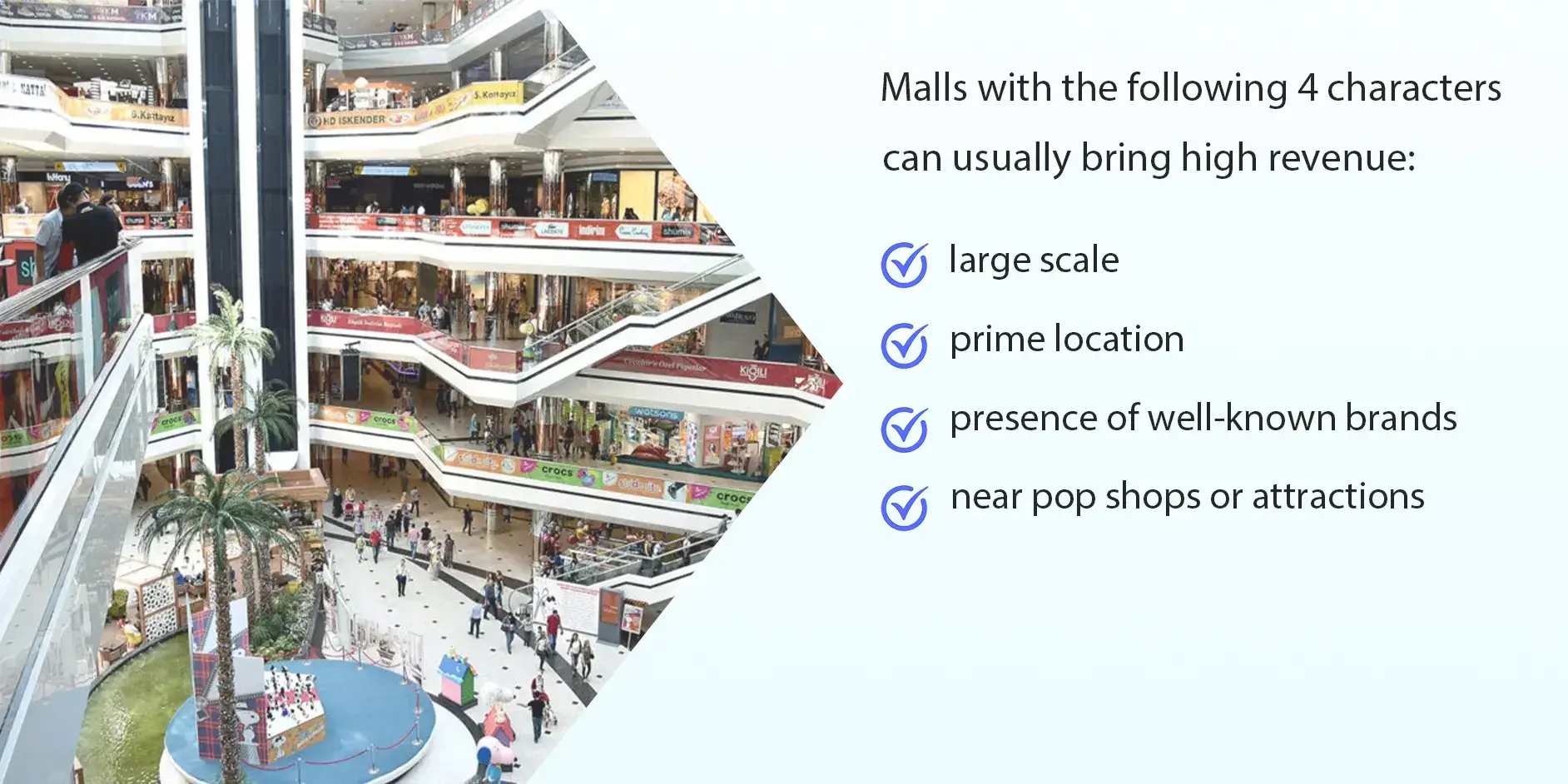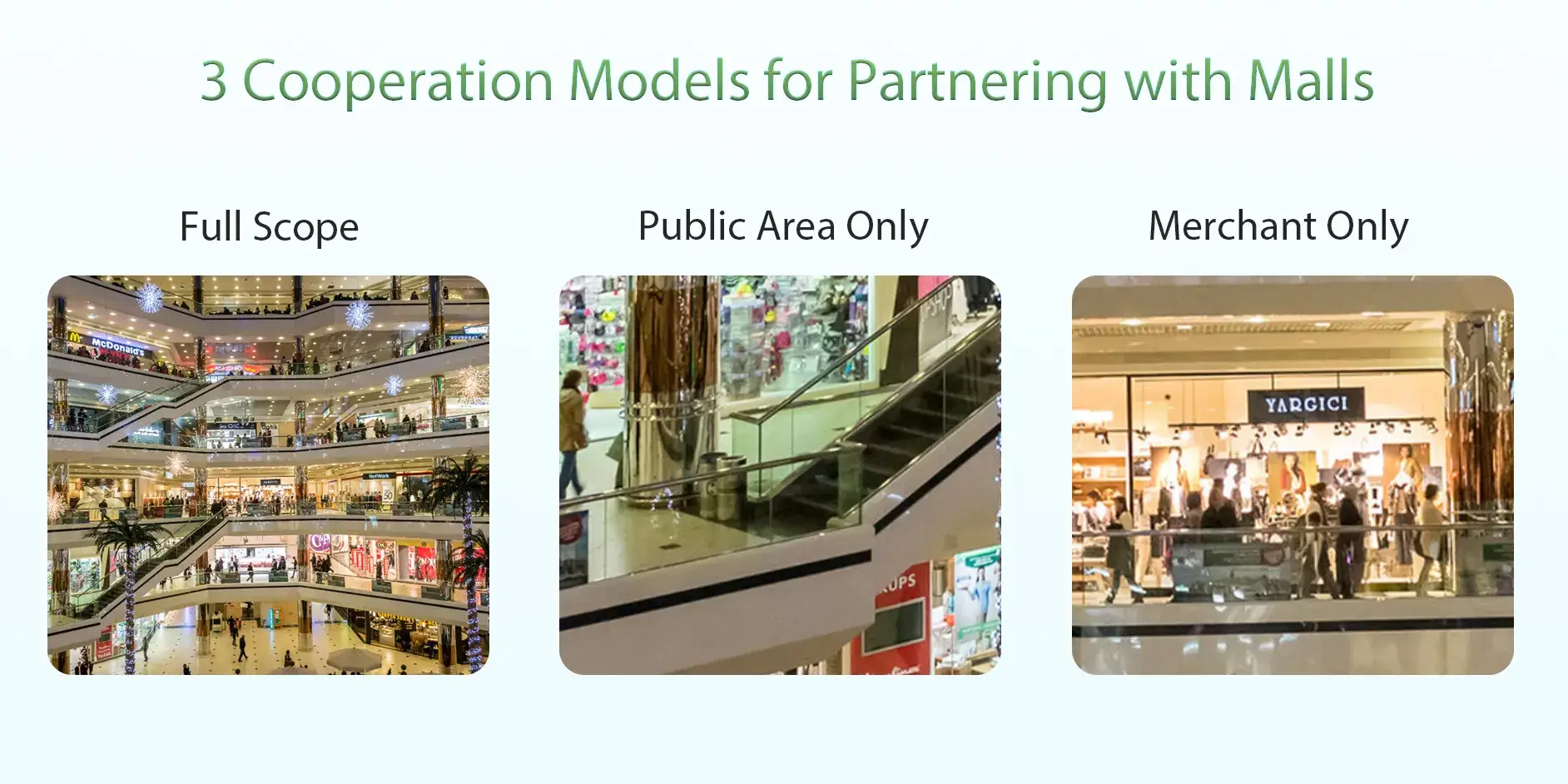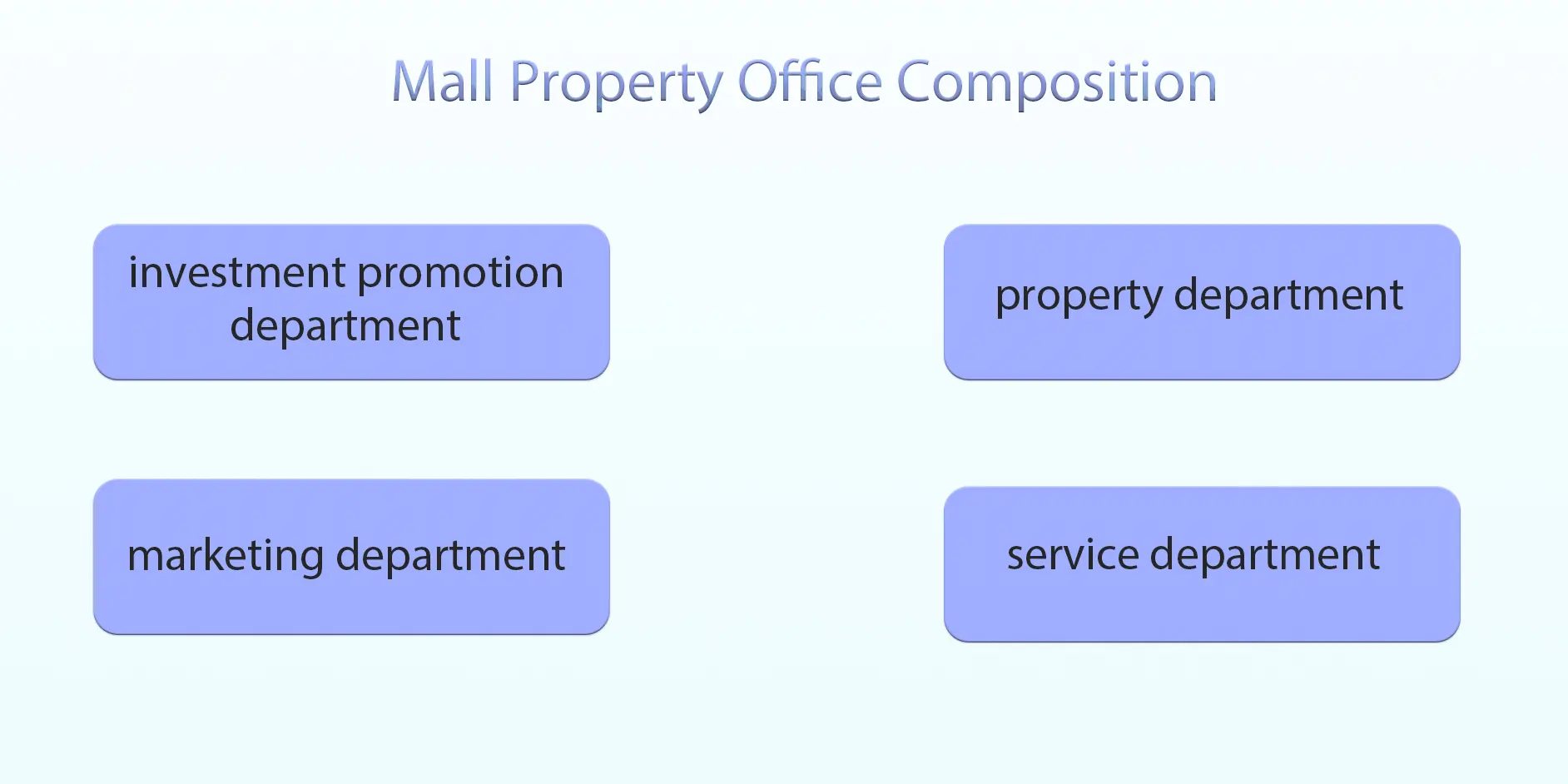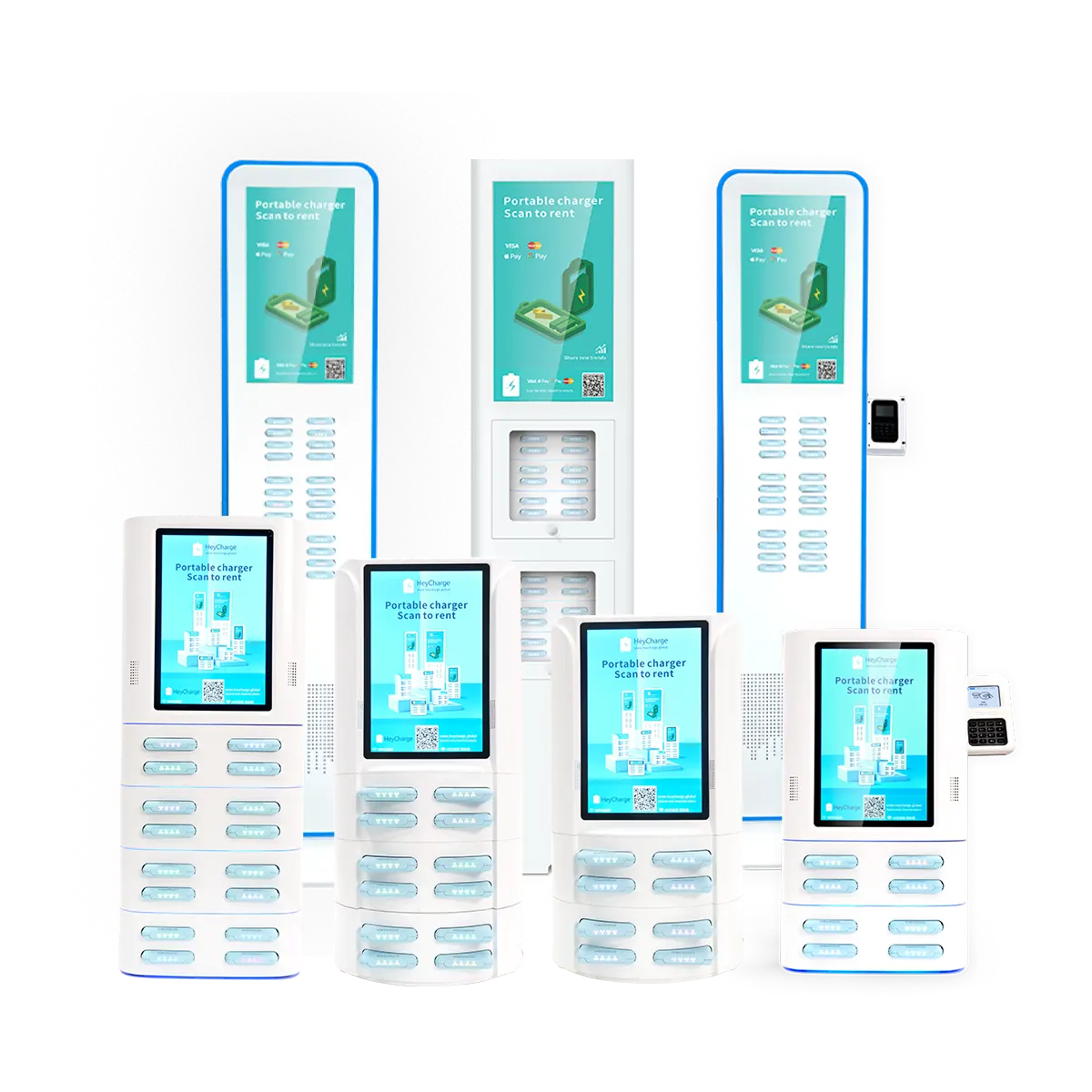How Can a Shared Power Bank Company Land a Deal with a Shopping Mall?
Step 1: Choose malls which generate high revenue.
Malls which can bring good revenue are usually large, at prime location, near popular shops or attractions, and accommodate many well known brands. If you are still unsure about it, try a one-month revenue test.
Step 2: Opt for a suitable cooperation model.
Try your best to strive for full-scope partnership, next, public area-only partnership, then, merchant-only partnership.
Step 3: Negotiate with malls.
Firstly, find key decision makers at the property office. Secondly, persuade malls to cooperate via exchange benefits. Finally, if you still don’t know how to negotiate, HeyCharge can guide you.
Step 4: Place shared power banks strategically to maximize revenue.
High-exposure areas matter most and are the key station deployment target. As for other areas, they are the supplement deployment areas.
As we all know, shopping malls are typical locations with heavy foot traffic, making them a fiercely contested space for shared power bank companies. Malls not only draw large crowds, but visitors also tend to stay for extended periods, which perfectly aligns with the placement conditions for shared power banks.

Deploying shared power banks in shopping malls can often lead to considerable profits. So, here comes a question – how can you negotiate and land a deal with a shopping mall? Let’s explore that today! Of course, you can also directly contact HeyCharge for your personalized solutions!
Firstly, feel free to check out the table of contents below to get an overview of the main points covered in this article. If a specific section piques your interest, you can directly click to jump to it.
Table of Contents
Part 1: Which Shopping Malls Can Bring Shared Power Bank Companies High Revenue? – 4 Key Characteristics
The goal of partnering with a shopping mall is to maximize earnings undoubtedly, making the selection of the right mall crucial. Not every mall has high traffic and some may even be relatively quiet with poor business.
So, what type of mall can generate high revenue? Generally, malls with the following 3 characteristics tend to deliver higher profits. Here’s what you should look for:
1.1 Large Scale
A medium-sized mall typically covers about 100,000㎡, while a larger one might span around 200,000㎡. Of course, the mall size varies by country, and you should assess according to actual situations.
In general, the larger the mall, the more people it can accommodate, resulting in higher traffic and better chances of generating high revenue.
1.2 Prime Location
Malls in major cities usually have better locations compared to those in 2nd- and 3rd-tier cities. City centers outperform suburban or newly developed areas where facilities are not yet fully established. Proximity to transportation hubs is also highly favorable.
1.3 Presence of Well-Known Brands
Renowned brands, including popular restaurants, well-known supermarkets, and flagship stores, attract a lot of customers. If a mall hosts many such brands, foot traffic is unlikely to be low, and placing shared power banks here can generate significant revenue.
1.4 Popular Shops or Attractions Nearby
Malls located near popular shops or tourist attractions benefit from spillover traffic. People often visit these areas to “check in” at must-see places, which drives up foot traffic in nearby businesses. If a mall is near such high-traffic locations, it is likely to see high visitor numbers.

If you are unsure whether a particular mall can generate high revenue even after considering these factors, you can opt for a revenue-testing approach. Negotiate a one-month trial period with the mall, offering 100% of the revenue during this time to the mall.
This way, the mall nearly won’t lose anything but getting benefits, and they generally won’t refuse you. If the results are promising, this mall will be your target power bank sharing venue. Then how to cooperate with this mall? How to negotiate with it? Continue reading, and you’ll find the answers.
Part 2: How Should a Shared Power Bank Company Collaborate with a Shopping Mall?
There are generally 3 cooperation models for partnering with malls: full-scope cooperation, public-area-only cooperation, and merchant-only cooperation.
- Public areas include hallways, corridors, elevators, and service desks.
- Merchants refer to shops, restaurants, cinemas, supermarket, brand stores, and other facilities within the mall.
- Full scope covers both public areas and merchants.
2.1 Full-Scope Cooperation [Recommended]
This is the ideal cooperation model, allowing you to scientifically place shared power banks based on the layout and types of merchants in the mall.
2.2 Public Area-Only Cooperation
If a full-scope partnership isn’t possible, prioritize public-area-only cooperation. You can later target specific high-exposure stores for further collaboration.
2.3 Merchant-Only Cooperation
If both full-scope and public-area cooperation are off the table, focus on partnering with as many merchants as possible within the mall. Securing even one partnership is a step toward broader coverage.

In fact, whichever cooperation model you want to adopt, good negotiation skills are essential. So how to negotiate with a mall? Let’s explore it together~
Part 3: How to Negotiate with a Mall? – Mutual Benefits Are KeyHOT
Negotiation begins with identifying key decision makers. Without finding the key person, even the best negotiation tactics will fall flat.
3.1 Identify Key Decision Makers
Then how to find key decision makers? We’ve ever discussed this topic in How to Find Key Decision Makers of Phone Charger Rental Venues and Negotiate Cooperation?[4 Methods], you can take this article for reference.
As for malls, the key decision makers are usually the general managers or department heads. There is usually a property office, which is generally composed of the investment promotion department, property department, marketing department (may be divided into the planning department and brand department), and service department. You can generally find the key person at the property office.

Generally speaking, if you want to deploy shared power banks in a shopping mall, you should negotiate with the investment promotion department and the property department, because they are in charge of this kinds of business.

It’s best to approach the marketing department first rather than directly dealing with the investment promotion department or property department.
If you negotiate with the investment promotion department or property department first, you can do nothing but directly directly talking about money. They won’t care about it even if you have other advantages, which makes you at passive position.
But it will be different if you negotiate with the marketing department first. The main task of the marketing department is to promote the brand. Marketing staff may be more receptive to proposals that offer benefits beyond financials, such as enhancing brand visibility. If you can help them with brand promotion, you can negotiate conditions with them instead of just talking about money.
3.2 Mutual Benefits (Benefit Exchange)
Having found key decision makers, it’s time to start formal negotiations. In fact, to succeed in negotiations, the focus should be on mutual benefits (benefit exchange).
Simply speaking, you offer something the mall needs in exchange for what you want, them both parties can reach the aims. More importantly, you may even pay less if what you offer highly values for the mall.
For example, if you are to negotiate with the head of the marketing department, you need to identify what they want most firstly. As mentioned above, their top priority is more effective brand promotion ways. You can use strategies like advertising, attracting followers, and loyalty points to persuade them to collaborate with you.
3.2.1 Negotiating with the Marketing Department
Boosting Advertising
Shared power banks, due to their widespread placement, serve as excellent tools for advertising. You can not only stick promotional posters to powerbank charging stations but also display ads on the built-in screens. As long as people pass by or use the shared power bank, they will see the ads, significantly increasing their exposure.

Rental Power Bank Stations with Ads Screen – HeyCharge
 indoor / outdoor stations
indoor / outdoor stations with / without touchscreen
with / without touchscreen support various multimedia files
support various multimedia files  colorful breathing light
colorful breathing light 8G storage space
8G storage space high performance CPU
high performance CPU Android system
Android system support WIFI / 4G network
support WIFI / 4G network remotely Ads management
remotely Ads management fireproof
fireproof explosion-proof
explosion-proof anti-theft
anti-theft logo customization service
logo customization service
Attract Followers
You can print QR codes for WeChat public accounts, Facebook Pages, Instagram Business Accounts, Twitter, LinkedIn Company Pages, YouTube Channels, etc., and attach them to the power bank charging stations, or display them directly on the screen.
You can also add enticing slogans like “Scan for a Discount” or “Follow Us for a Coupon” to attract users to follow your social media pages, helping you grow your follower base.
Facilitate Loyalty Point Redemption
Most shopping malls have loyalty point systems via which points can be exchanged for gifts once they reach a certain amount. Malls are usually eager to have customers’ points redeemed because it enhances customer interaction and engagement.
By partnering with the mall, you can integrate the point redemption system with the power bank sharing renting system, allowing points to be exchanged for free charging time.
Customers may not always like the gifts prepared by the mall, but if their phone battery is running low, they’ll certainly appreciate free charging time. This creates an attractive incentive for customers.
3.2.2 Negotiating with the Investment and Promotion Department and Property Department
Once the marketing team is on board, internal discussions within the mall will follow, giving you more leverage in financial negotiations. 3 common profit sharing models are revenue sharing only, entrance fees + revenue sharing, and entrance fees only (paid monthly, quarterly, semi-annually, or annually).
It is recommended to prioritize the “revenue sharing only” model.
Since it allows for shared risk with the mall — either both parties make money or neither does. This is the most cost-effective option.
Next, consider the “entrance fees + revenue sharing” model.
Some malls may want to see upfront payments and may request rent first. You can promise them. Actually, this can also benefit us, as we can include a penalty clause in the contract to protect against the mall replacing us with another competitor too easily. Plus, by paying an entrance fee, the revenue sharing percentage can be lower.
Make sure to do the math to ensure not ending up losing money.
Finally, consider the “entrance fees” model.
If the mall demands a high fee. In this case, try to negotiate monthly or quarterly payments to shorten the payment cycle. This allows for timely adjustments, lowering our risk.
Additionally, the contract should specify that if we incur losses, the cooperation period can be reasonably extended, or the next cycle can have a lower entrance fee.
If the revenue flow is uncertain, you can propose to test the revenue for a month, offering 100% of the earnings to the mall during the trial period, and then discuss the payment afterward.
You can refer to these strategies when negotiating with malls, as these are likely to meet their needs, and they will generally be willing to cooperate. Then, you can select the appropriate profit sharing model based on the actual situation.
Of course, if you’d like to learn more negotiation tips, feel free to contact HeyCharge. We can guide you to negotiate efficiently and secure better deals. Click the “Inquire Now” button below to get in touch with us now~
3.3 HeyCharge Teaches You Efficient Negotiation
HeyCharge, a shared power bank provider with 7 years of industry experience, not only offers power bank rental stations that has passed various quality certifications but also provides proprietary power bank sharing admin system and client solutions that are well-received by users.

Our slogan is “100% light your success in the power bank sharing business” , and your success is also our success!
Therefore, we would do our utmost to help you quickly start your shared power bank business step by step, negotiate with venues, expand more power bank sharing markets, and guide you on how to better operate this business so you can make money quickly in this shared power bank industry. Well, click the “Inquire Now” button below to contact us now~
We believe that after mastering these negotiation skills, your negotiation success rate will significantly increase. Once you’ve landed a deal, you can enter the mall and start your journey to profitability.
However, simply placing your equipment randomly won’t guarantee high revenue. If your machine placement is not strategic, even the best malls may not bring in substantial income. Now, let’s look at how to place the power bank stations to maximize revenue~
Part 4: How to Place Power Bank Stations to Maximize Revenue?
4.1 Study the Layout of the Mall
Firstly, you should understand the types of merchants and facilities on each floor, and where people tend to congregate. Let’s assume the mall has 5 floors.
Typically, the 1st floor is a crucial area for exposure, especially around the main entrance and the elevators, as these are high-traffic spots that everyone will pass by. And many customers may walk around the 1st floor before heading upstairs.
The 2nd and 3rd floors are usually dedicated to clothing, shoes, and bags stores, forming the shopping zone. While these stores see high foot traffic, customers tend to spend less time staying here.
The 4th and 5th floors are generally reserved for dining, entertainment, and leisure areas. These spots not only attract large crowds but also encourage longer stays.
Note: Merchant layouts can vary among malls.
4.2 Prioritize High-Exposure Areas, Strategically Place in Other Areas
If you have striven for the full scope cooperation successfully, it’s typical to place 1-2 units near each elevator and service desk on every floor. You can increase the number of units on the 1st floor, especially near the main entrance.
The dining and entertainment areas should be the primary focus for placement; if there are more than 20 restaurants in the mall, you may need around 20 units in those areas.
In the shopping zones, where people tend to stay for shorter periods, these areas can serve as supplementary placement locations, and you can target well-known brand stores for deployment. Typically, for a 5-story mall, you would need to place around 40-50 units.

It’s best to place power bank rental kiosks with screens, as they blend in better with the mall environment and are easier to noticed. The large screens also provide better visual effect for displaying ads, enhancing the effectiveness of the advertisements.
Conclusion
Now you’ve known how to select the right mall, choose a cooperation model, negotiate successfully, share profits, and place stations strategically to maximize revenue after landing a deal with the mall. If you’d like further assistance, feel free to contact us by clicking the “Inquire Now” button below~



